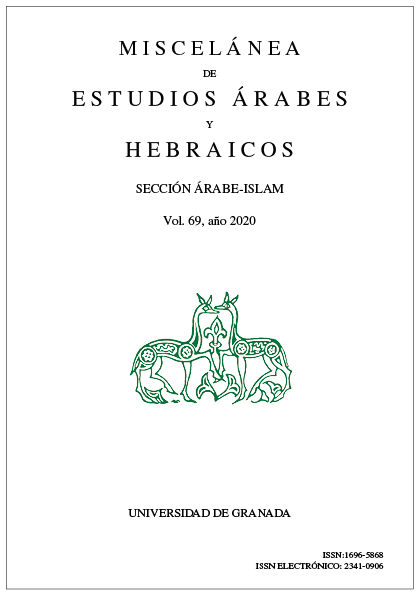Morisco silver work with wire (sixteenth century)
DOI:
https://doi.org/10.30827/meaharabe.v69i0.1050Keywords:
Christian jewelry, Morisco, Valencia, Granada, Modern AgeAbstract
The article discusses twenty tests performed by Valencian artisans to become masters of ―wire work‖ between the years 1508 and 1538. Considered minor works in the area of silver smithery, these pieces of jewellery are characterized by superimposed wire decoration. A peculiarity of these tests was that the pieces were not drawn on paper (the common practice for record-keeping purposes), but rather blackened and then stamped on- to paper. As a result, life-size and dated imprints have been preserved. as have the names of the artisans. They were silver workers whose biographies are known, all of them Christian; many of them worked in the Tossal district of Valencia, next to the M uslim quarter. Six square metal plates have an epigraphic band with Arabic letters, which explains why these pieces were also called ―Morisco things‖. With the help of the imprints and archaeo- logical parallels, this article tries to determine what kind of jewellery they were. The deco- rative and typological similarity between some of these pieces and the M orisco jewellery found in the Alpujarra region, dating from the second half of the sixteenth century, suggest that the latter also may be the work of Christian metal workers.
Downloads
Downloads
Additional Files
Published
How to Cite
Issue
Section
License
The authors publishing their work in this journal agree to the following terms and conditions:
1. The authors retain the copyright and give the journal the right to be the first publication of the work and also to be licensee under a Creative Commons Attribution License which allows others to share the work, provided the author of the work and the initial publication in this journal are acknowledged.
2. Authors may make additional agreements separately for the non-exclusive distribution of the version of the work published in the journal (for example, putting it in an institutional repository or publishing it in a book), with acknowledgement of its initial publication in this journal.
3. Authors are allowed and encouraged to electronically disseminate (for example, in institutional repositories or on their own web page) the published version of their works (publisher's post-print version) or, if not possible, the author's reviewed and accepted post-print version. This is to facilitate productive exchanges, and allow for earlier and greater citation by third parties of the published works (See The Effect of Open Access).
4. The journal accepts no responsibility for the opinions expressed by the authors.



















